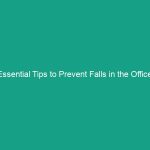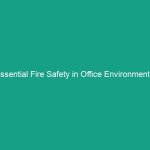Good Morning Team!
Today, we’re going to discuss a critical aspect of Workplace Safety: Essential Fall Protection for Leading Edges: Guardrails and Safety Nets. This topic is vital because fall-related accidents continue to be one of the leading causes of workplace injuries. By understanding the importance of proper fall protection measures, we can help ensure everyone returns home safely at the end of the day.
Understanding Essential Fall Protection for Leading Edges
Fall protection is a range of strategies and equipment designed to prevent falls in the workplace, particularly at leading edges where workers could easily slip or trip. Guardrails and Safety nets are essential components of a well-rounded fall protection plan. Understanding their roles is crucial for your safety and the safety of your coworkers.
Many employees may think that falls are a rare occurrence or that they only happen to others. However, statistics show that falls are a significant risk in many industries, particularly in construction and Maintenance. By recognizing the importance of fall protection, we can change this mindset and prioritize safety.
Key Hazards, Risks, and Safety Considerations
When working near leading edges, several Hazards and risks can arise. Here are some key points to consider:
- Unprotected edges: Working near unprotected leading edges is a significant hazard. A slip or misstep can lead to a serious fall.
- Environmental factors: Wet or icy surfaces can increase the risk of falls. Be aware of weather conditions that may affect your work Environment.
- Improper use of equipment: Not using guardrails or safety nets correctly can render them ineffective. Always follow proper Procedures.
Ignoring these risks can lead to severe consequences, including injuries that may require long recovery times or even result in fatalities. We must take these hazards seriously and implement preventive measures.
Best Practices, Procedures, & Actionable Advice
To ensure your safety when working at leading edges, follow these Best Practices:
- Use guardrails: Ensure that guardrails are installed wherever there is a danger of falling. They should be sturdy and meet the required height Regulations.
- Install safety nets: Safety nets should be positioned properly beneath work areas where falls may occur. Always inspect nets for damages before use.
- Wear Personal Protective Equipment (PPE): Always wear appropriate PPE, including harnesses and lanyards, when working at heights.
Here’s a real-life example: In a recent incident at a construction site, workers ignored safety procedures and did not use guardrails. A worker slipped and fell from a leading edge, resulting in serious injuries. This incident could have been avoided by adhering to safety protocols.
Regulations, Standards, and Compliance
Compliance with safety regulations is not just a legal requirement; it’s essential for your safety. The Occupational Safety and Health Administration (OSHA) provides specific guidelines for fall protection in various industries. Key regulations include:
- osha Standard 1926.501, which outlines the requirements for fall protection in the construction industry.
- OSHA Standard 1910.28, which covers general industry fall protection requirements.
Adhering to these regulations can help protect you and your coworkers from falls. Remember, compliance is not just about avoiding fines; it’s about ensuring a safer workplace.
Employee Engagement & Discussion
Let’s take a moment to discuss this further. What safety challenges have you encountered related to working near leading edges? Have you observed any situations where Safety Measures were lacking? Your experiences can help us improve our safety protocols.
Conclusion & Key Takeaways
In conclusion, prioritizing Essential Fall Protection for Leading Edges: Guardrails and Safety Nets is crucial for maintaining a safe work environment. By understanding the hazards, risks, and Best Practices associated with fall protection, we can all contribute to a safer workplace.
Remember, your safety and the safety of your coworkers depend on your commitment to following these practices. Thank you for your attention today and for your dedication to keeping our workplace safe. Let’s make safety a priority!


